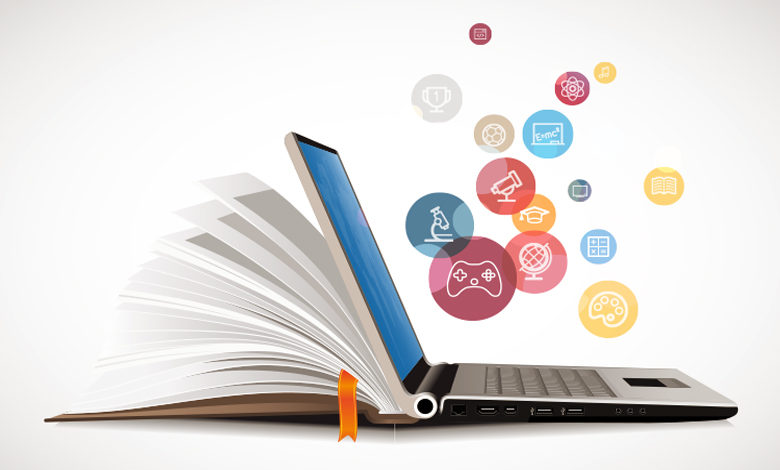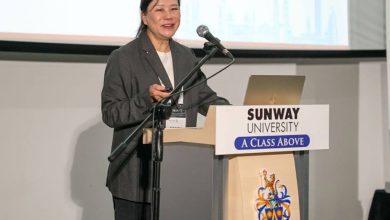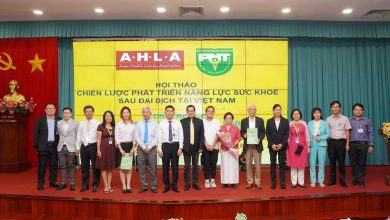Improving teaching and learning: are we ready and willing?

Can we do better where teaching and learning are concerned? That is indeed a rhetorical question. Yes of course we can and indeed, we should. Online education is yet again highlighted as the big opportunity, with the Covid-19 crisis as catalyst to make this change – finally – mainstream. Are we indeed on the verge of a big shift in how we teach and learn? If so, why and what is expected?
It is a reasonable estimate that more than 95% of all students in tertiary education are focused primarily on a professional career and they (if not their sponsors, parents and taxpayers) tend to measure success mostly in terms of employment. The need for academic ‘regeneration’ – the next generation professors – likely concerns at most 1% of all graduates. In principle, there is of course nothing wrong with ‘knowledge for the sake of knowledge’ and ‘study for the sake of study’, but in fairness this laudable objective, nor the need for identifying the academically most gifted, can be expected to be the dominant rationale for one of the biggest investments a society makes. So, even when disregarding political utilitarian bias, it is reasonable to expect the education sector to take the employability of graduates seriously. One might even say: to take that more serious than anything else.
Over the decades, a large amount of evidence has accumulated showing unambiguously that students whose education takes them beyond the classroom and library do better in terms of employability. Internships, placements, the German stye of ‘Duale Lehren’, apprenticeships, short work-based projects, service learning and also study or work abroad periods all give a measurable and significant boost to career success.
A growing number of global universities as well as governments are becoming converts, recognising that limiting education to classroom and book-based concepts is a disservice to the majority of students. Some universities and colleges offer forms of experiential education in the margin of ‘proper’ studies – some will accept this as an optional or extracurricular activity, but a growing number accept that the real success of the educational formula requires full integration of experiential learning into conceptual learning.
Interestingly, so far institutions rarely have adopted virtual learning tools as a way to achieve the integration of conceptual and experiential learning. To me this looks like a missed opportunity. To change that, we need to provide more information on both how it can be done, and how it can be done better, during the various stages of vocational and professional education.
Stage 1: Virtual talent-spotting
Using games as an effective tool to spot talent – not just academic gift but any talent – is a remarkably underused method and there are three levels to this.
For an individual, virtual diagnostic games are not just fun, as they can be a great means of finding out what one is good at and what one enjoys – two areas that are typically identical – and this will help enormously in identifying the direction of study and future careers.
Too many young people end up taking career paths they do not enjoy, through misinformation, parental or peer group pressure, or simply because they have no clear ideas about their future. This is a well-known issue and, sadly, many later regret their choices, sometimes for their entire life.
Though it would be unreasonable to assume that well-designed games offer the ultimate answer to this issue, there is now a wealth of evidence that diagnostic games can be effective in guiding individuals at any stage in life, in helping to clarify their learning and professional preferences.
Second, universities and colleges are keen to attract the ‘right’ students, ensuring a good match between a student’s talents and abilities and the demands of study. Using merely the grades obtained in secondary education as guidance is generally recognised as uncomfortably simplistic. Though the level of scholarly ability demonstrated under the stress of a standardised exam can be appropriate for research-led universities that want to spot the academically gifted, this is just one, and often not even a very good, indicator for future success.
Aptitude, leadership, teamwork and creative potential are all just as essential indicators and these are better tested by using analytical simulations.
To give an example – when I was rector magnificus of Nyenrode Universiteit (a Dutch leadership development-focused university), I found that a virtual competition, in which participants underwent several rounds of a virtual game that required being part of various multicultural teams and were expected to handle stress and demonstrate analytical skills, among others, was an effective way to identify those with leadership potential and entrepreneurial talent. A full scholarship was awarded for the ultimate winner and discount prizes went to the runners-up.
For employers, well-designed games can help to identify potential in a range of areas, often at quite a young age. Investing in such talent, through scholarships, for example, can be a much smarter way of identifying the future high-flyers, rather than waiting for their graduation and then bidding against other employers for the most talented.
Though one recruiting method does not need to exclude the other, identifying the right potential through diagnostic games has so far remained underused as a tactic in the global war for talent. Using virtual tools to reach out early to future applicants or students is to the benefit of both the individual and academia.
Stage 2: Classroom-based learning and the role of social games
One of the key elements of learning is having fun, or I am convinced at least it should be. Most educational institutions tend to focus heavily on formal learning, forgetting the importance of informal learning through social games and competitions. Though there are, of course, educational institutions, especially in Europe, that appreciate the importance of games, few have incorporated them into online education and virtual learning.
With COVID-19 suddenly forcing colleges globally to adopt virtual teaching, students overall have expressed that their biggest frustration is the lack of social interaction with their peers and the opportunity to have fun. The typical reaction of colleges is to ignore this, as they believe they are responsible only for providing formal education. In my view, this is a misunderstanding about how students learn and develop.
Professional educational games for fun and competition are crucial for the development of skills and are required for future success in professional life. Though virtual games and play do not replace real-world interactions, they can supplement, and, in exceptional circumstances (such as COVID-19), also provide a substitute. Most importantly, they are a great preparation for real-world interactions.
Another potential advantage is how virtual and augmented reality can be used to reduce the required time in, for instance, labs and studios and how simulations can be helpful in engaging students – something that is imperative for achieving quality Integrated Virtual Learning (IVL).
Stage 3: Testing competences through simulations
The classic way of assessing a student’s progress is through written and sometimes oral examinations. Indeed, these can be useful when assessing acquisition of knowledge and also analytical skills, but when it comes to the broader assessment of acquired competences – crucial for professional education – simulation tests are just as effective, if not more so, than traditional assessment tools.
Students have been taught a range of skills, knowledge and insights, but finding out if they have really mastered their lessons in terms of acquired competences is best tested by placing students in a situation in which they are not yet familiar and giving them a task in which they use what they have learned. Doing so virtually, through a simulated game or test, is thus an efficient way of assessing how well the student has mastered the relevant study materials.
But, even more importantly, this form of assessment allows a college to gradually increase the levels of ‘uncertainty’ to which a learner is exposed, thus taking the student in steps towards the real world of professional challenges. After all, that is the core objective of higher education – to prepare a student as well as possible for success in the professional world.
This is similar to the way aspiring pilots use a simulator to test their knowledge and competences – being exposed to ever more challenging, unforeseen situations before entering the cockpit to fly the real plane under supervision. I would argue that students should experience virtual simulations to gain confidence, learn how to deal effectively with the unexpected and, most importantly, learn to use failure as a learning tool rather than an embarrassment.
Stage 4: Creating a safe environment for real-world learning through reflection
Simulations, virtual reality and gaming do not replace the real-world experience. On the contrary, they aim to prepare students for reality. So, as part of their education, students must step out of the virtual into the real world in a safe and supervised setting initially.
Whether these are small or major steps, such as a lengthy internship or study-work experience abroad, what is crucial is that it is almost, but not completely the ‘real’ thing, so there is still a safety net – and equally important is the fact that there is a systematic process through reflective self-assessment, guided or facilitated peer-group reflection or one of the many other learning tools that are available.
This final step towards achieving optimal employability is that the student feels prepared and has the tools needed for the rest of their life to deal with complex work situations.
State 5: Lifelong professional reflection through diagnostic testing and gaming
After having reached the graduation milestone, it is to be hoped that the graduate will be able to benefit for long time if not life time, from the self-help support groups that can be retained from their years at college. There might even be various programmes available that the college offers online and/or in-residence to update their skills.
In my view, a student is for life, not just for graduation, and virtual tools are perfect to cultivate that relationship, not just over the years but over the decades, to the mutual benefit of students and universities.
The success of professional and vocational education is linked to employability and this is related to the integration of conceptual and experiential learning. Gaming, simulations and related tools are powerful means to achieve this in a structured manner. Moreover, the five stages identified above show how to combine this objective with outreach before formal tertiary education and with university aftercare.
The Covid-19 crisis has indeed placed higher education leaders in front of an open goal. Oddly it still seems for many an uncomfortable position to be in.
Prof dr Maurits van Rooijen
Chief Academic Officer of Global University Systems (www.gus.global) and
Rector of the University of Europe for Applied Sciences Germany (www.ue-germany.com)




